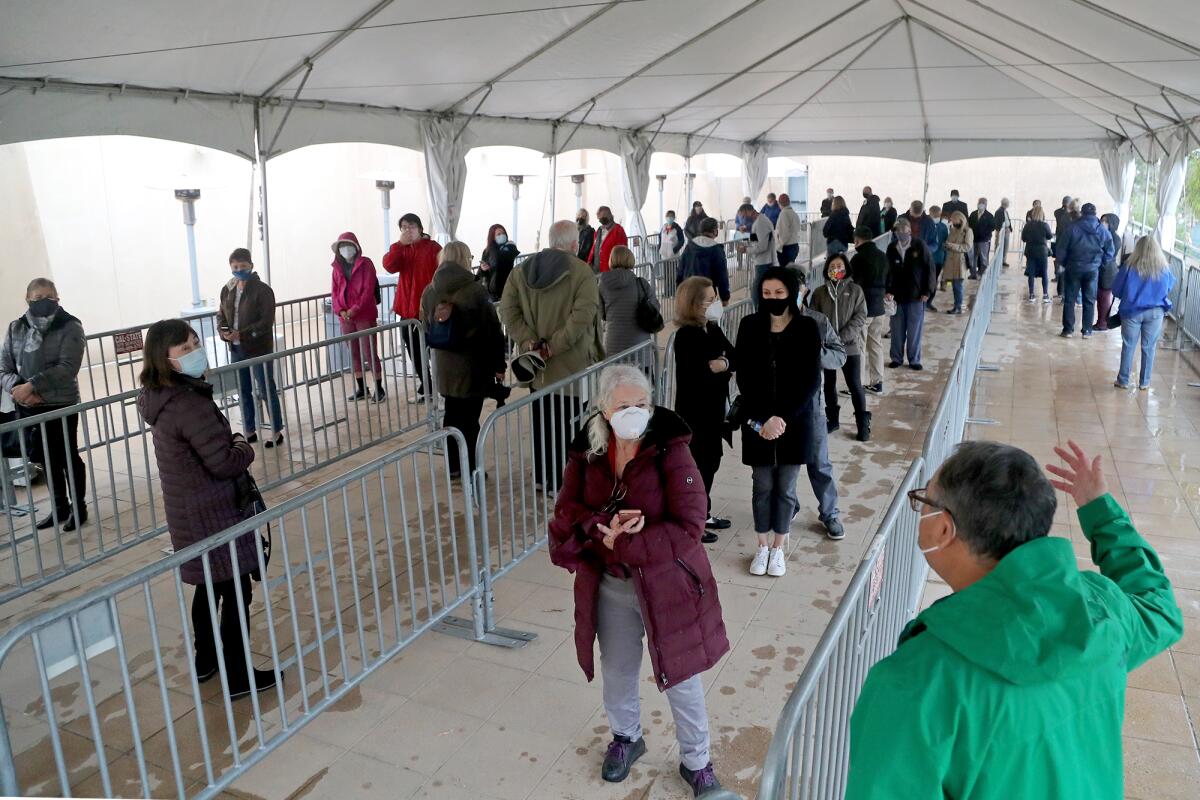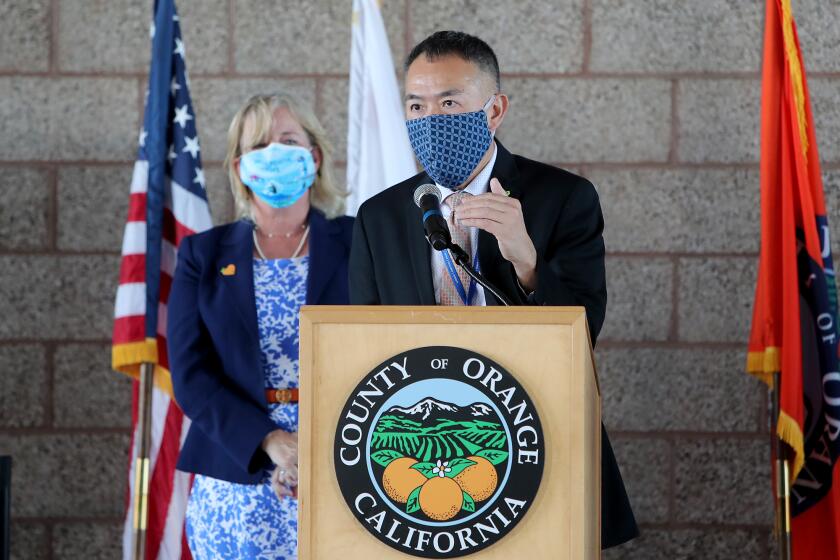COVID-19 hospitalizations in Orange County drop below 100 for first time in months

Orange County’s number of COVID-19 hospitalizations fell out of triple-digits for the first time in months today, while the county also reported just 55 new infections and did not log any further fatalities.
“That’s amazing,” Andrew Noymer, a UC Irvine professor of population health and disease prevention, told City News Service of the hospitalization number.
“Hospitalization is the most reliable metric that we deal with,” Noymer said. “And I’m really pleased to see it below 100. There’s nothing magic about 100. There’s nothing epidemiologically different between 95 and 105, but lower is better and there is a psychology to all of this. Even to an epidemiologist we’re still susceptible to the psychology of it all, so I’m pleased.”
The hospitalizations came down from 111 Sunday to 95 on Monday, and the number of patients in intensive care decreased from 24 to 21.
Monday’s figures pushed the county’s total to 254,044 cases. The county had 37.7% of its intensive care unit beds and 76% of its ventilators available.
Orange County continues to see encouraging overall trends regarding the pandemic, officials said.
Orange County officials announced Thursday the county plans to resume administering the Johnson & Johnson vaccine on Sunday, May 2.
Noymer said it was too early to say whether vaccine reticence will have an impact on reaching herd immunity.
“There is a scenario where just enough people are unvaccinated to keep the virus going and ruining it for other people through constant generation of new variants,” Noymer said. “But here we are on May 3. It’s too early to say that’s what’s happening. California has only been open to vaccines for everyone 16 and older for just two weeks and we don’t have the data yet ... We need to give it more time before pointing fingers at anti-vaxxers.”
Also, labeling people as anti-vaxxer is misleading, Noymer said.
“Calling people anti-vaxxer is kind of like asking them when did they stop beating their wife,” Noymer said. “There is a hard core of anti-vaxxers who are truly anti-vaxxers, and you will never reach those people. Believe me, I’ve interacted with some of them. But not everyone who wants to wait and see what this new vaccine is about is a dyed-in-the-wool anti-vaxxer. We need more time to see what’s going on.”
Noymer also clarified what the term “herd immunity” means to public health.
“Herd immunity is where the epidemic nature of the infection peters out and loses all of its animating force due to the fact that continuous chains of transmission are continually interrupted to immune people,” Noymer said. “It’s not that everyone is protected.”
One measure of herd immunity is when one infection stops generating multiple other infections. “Herd immunity doesn’t mean extinction of COVID-19,” he said.
The cases of COVID-19 could become rare for an extended period of time, but if it is reintroduced from someone outside the country, for example, it could create another surge, Noymer said.
“For example, in the 17th and 18th centuries there was a measles epidemic in Iceland and then Iceland would not have measles for 75 years because it would have herd immunity,” Noymer said. “But then eventually there would be a reintroduction of measles to Iceland because Iceland is part of the universe, so it would come back ... So herd immunity is not a permanent state because we live in the universe where every country is connected to every other country.”
Orange County could see a “three- or four-month stretch in the summer where there is exceedingly little COVID-19 and that can justifiably be defined as herd immunity, but in the fall or winter that may or may not continue,” Noymer said. “It depends on the reintroductions.”
Beaches in Orange County were ordered for closure by Gov. Gavin Newsom on April 30, 2020. Friday marked the one-year anniversary.
On Sunday, the county’s Super POD vaccination sites at the Anaheim Convention Center, Soka University and Orange County Fairgrounds were accepting walk-ins as well as anyone with a confirmed appointment. Orange County’s weekly averages for COVID-19 metrics, which are released on Tuesdays, kept it in the orange tier of the state’s four-tier economic reopening system, although it meets two of three categories for the least-restrictive yellow tier, according to most recent figures.
The county’s weekly average of daily new cases per 100,000 residents improved from 2.8 the previous week to 2.6. The overall test positivity rate remained at 1.4%. The county’s HealthEquity Quartile rate, which measures positivity in hot spots in disadvantaged communities, increased from 1.7% to 1.9%. The county’s positivity rates qualify for the yellow tier, but the case counts are still in the orange tier.
A graduation into the yellow tier requires that the case rate must get below two per 100,000 people. A county must maintain metrics for a tier for two weeks before graduating to a less-restrictive level. Orange County also resumed administering the Johnson & Johnson vaccine Sunday after it was paused at the urging of federal health officials due to rare cases of blood clotting in patients who had received the vaccine.
Dr. Clayton Chau, the county’s chief public health officer and director of the OCHCA, said he believes the Johnson & Johnson vaccine is “safe and effective” and that the risk of developing clotting is rare. The county continues to test at about the state average, Chau said last week. The county’s average last week was 308.8 per 100,000 residents. Another 5,642 tests were logged Monday, pushing the total to 3,682,723.
Fatalities logged this past weekend raised the death toll since the pandemic began to 4,969. The death toll for April is 19, 180 for March and 580 for February. The death toll for January, the deadliest month in the pandemic, stands at 1,529. December, the next deadliest, has a death toll of 940.
Support our coverage by becoming a digital subscriber.
All the latest on Orange County from Orange County.
Get our free TimesOC newsletter.
You may occasionally receive promotional content from the Daily Pilot.





